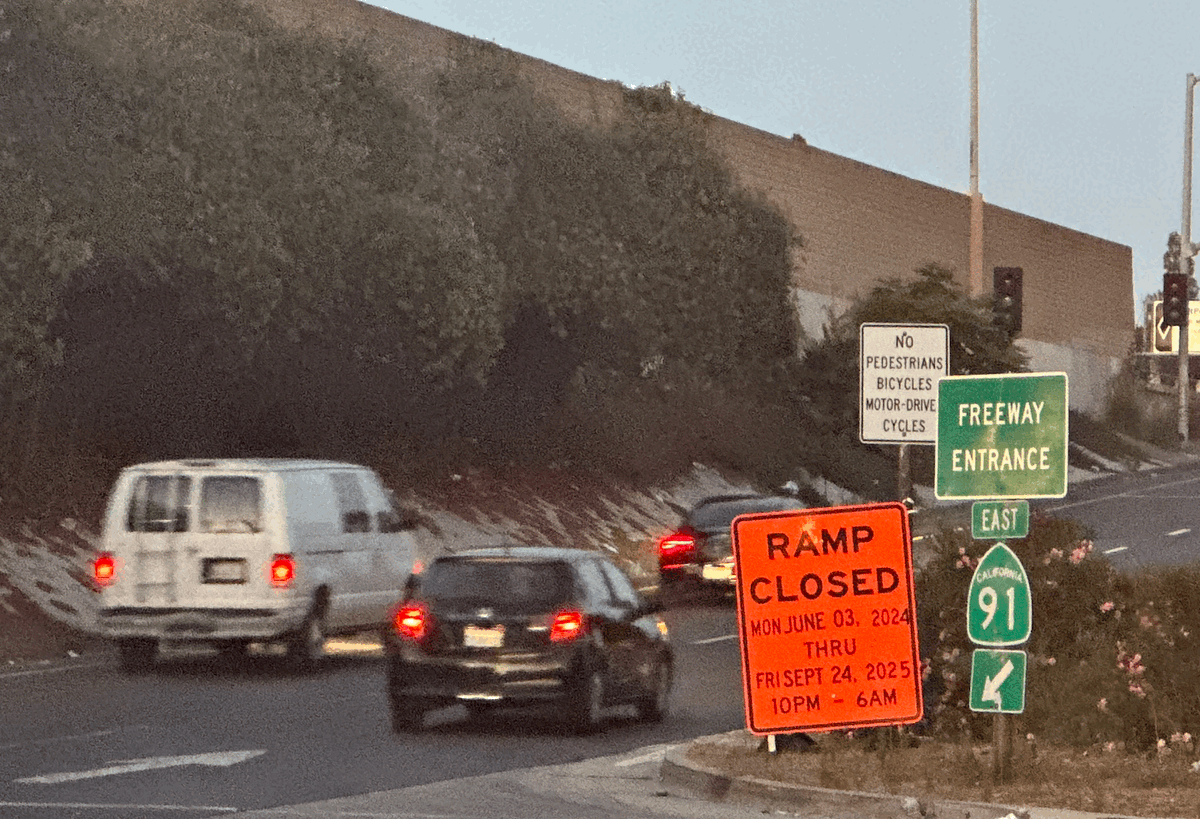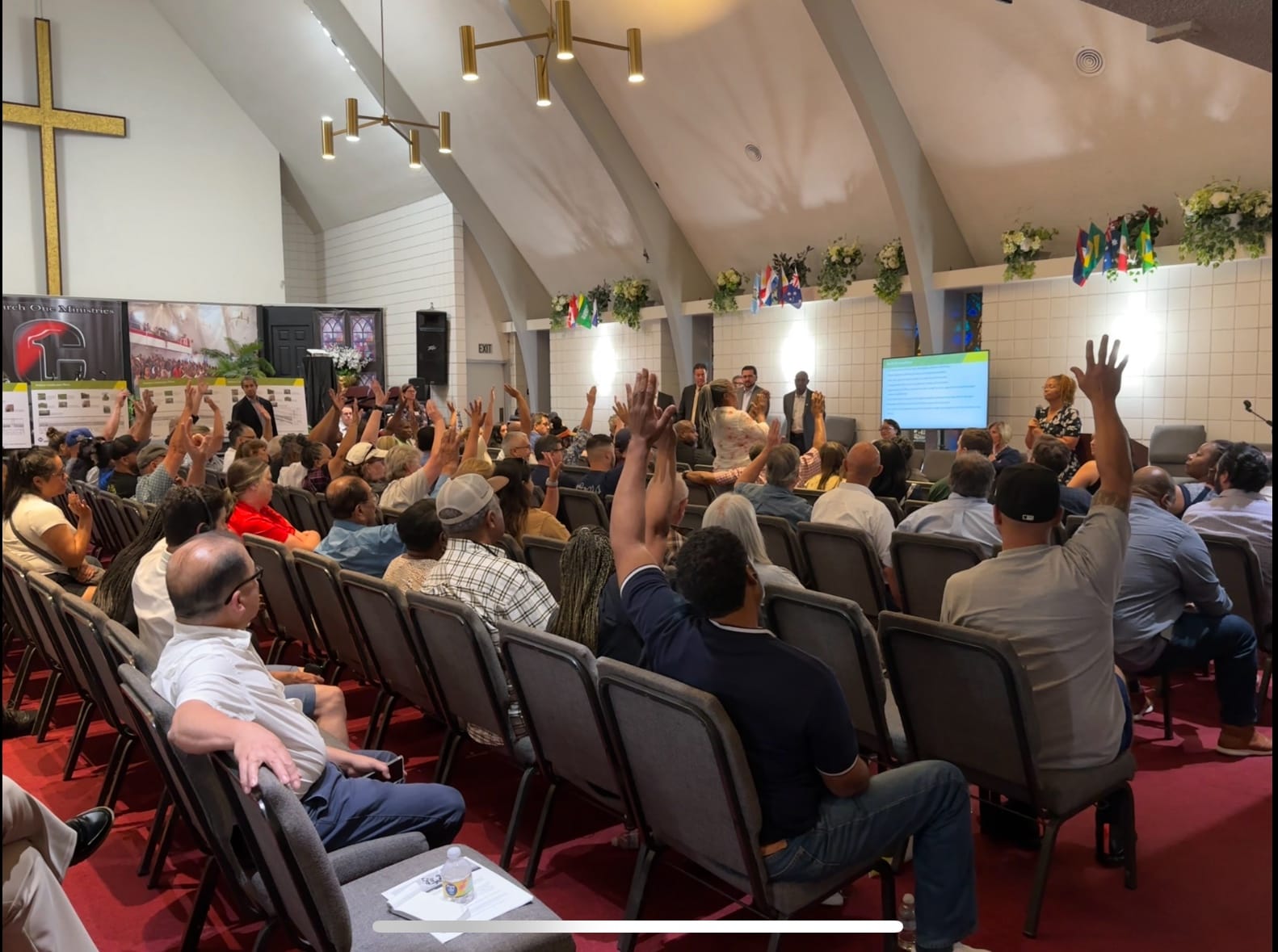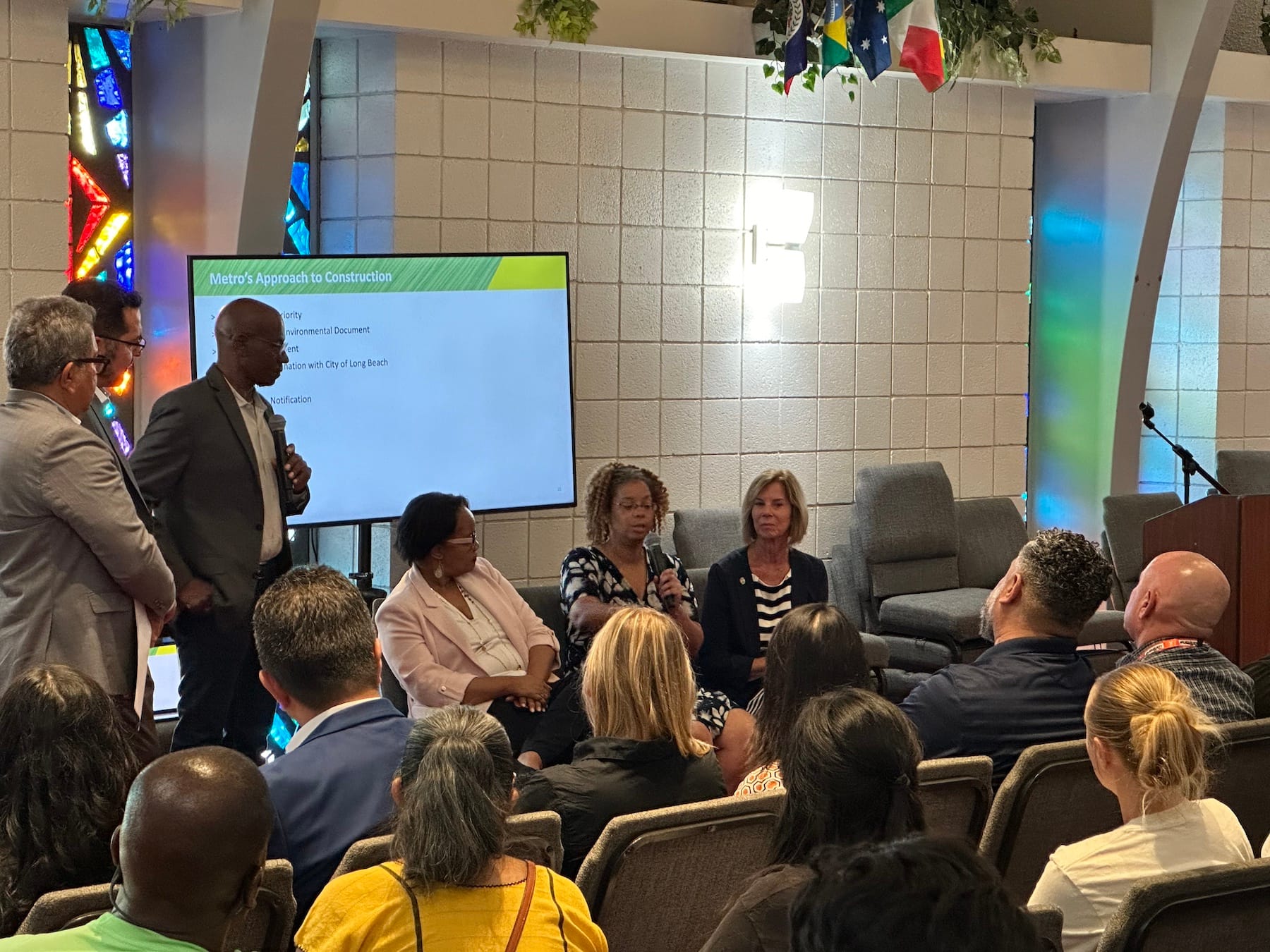91 Freeway widening appears dead after community rejects North Long Beach project
The $174 million project would have added an additional eastbound lane from the 710 Freeway to the Atlantic and Cherry Avenue exits.

A planned expansion of the 91 Freeway in North Long Beach may be in jeopardy after a community meeting Monday night where concerns from residents about pollution, noise, traffic and health effects from the project forced Los Angeles County Metro officials to reconsider it.
More than 100 people filled Church One Ministries on 70th Street just north of the 91 Freeway Monday evening where officials from Metro, CalTrans and the city listened to residents’ opposition to the project.
After nearly two hours of public comment, Councilmember Joni Ricks-Oddie, who represents the area, called for an informal vote on the project.
All but a handful of attendees raised their hands in opposition to the expansion.
“I think the community has spoken, we are saying ‘No’ to the 91 extension project,” Ricks-Oddie said.

LA County Supervisor Janice Hahn, who recently became chair of Metro’s board of directors, said she wouldn’t support the project if the community didn’t believe the benefits of the expansion outweighed the negatives.
It’s unclear if stopping the project will require a vote by the board but Hahn said it’s unlikely to move forward.
“If this project doesn’t have a champion on the board, I think it’s pretty clear that we’re going to need to pull the plug,” Hahn said. "I think it was pretty clear this community didn’t want this project.”
Monday’s meeting came after a June 25 meeting where many residents left upset over their interactions with the project team. Because of that, multiple members of Metro’s leadership, including CEO Stephanie Wiggins, attended Monday’s meeting and apologized for the June meeting, which Wiggins called “completely unacceptable.”
The $174 million expansion would create a new auxiliary lane on the eastbound 91 Freeway between the interchange with the 710 Freeway and the Cherry Avenue offramp. It would also lengthen the onramp at Atlantic by about 500 feet to allow more cars to queue on the ramp instead of backing up onto Atlantic.
Metro officials said Monday that the project was intended to increase safety and reduce congestion with a Metro report noting that the 1.4-mile segment was 30% to 73% higher than the statewide average in terms of accident rate.
The proposed improvements to the eastbound side of the freeway are projected to prevent hundreds of crashes and injuries over a 20-year period as well as one death, according to Metro data.
But community members said Monday that their needs were being put second to transit agencies wanting to quell traffic.
“It’s not right what we’re having to live with now and you’re asking us for this favor to protect people on the freeway,” said Renette Mazza. “That’s not a good trade.”
Residents complained of already bad air quality that could be worsened by the introduction of more vehicles to the 91 Freeway that runs alongside their homes and ongoing noise pollution issues.
Mazza and others pointed to vibrations from the freeway that they claimed have led to cracks in the foundations and windows of their homes. When the Metro board approved the budget for the expansion project, it also approved $1 million for air filtration systems to be distributed to residents within the first 750 feet of the project.
However, those have yet to be distributed by the city because the project hasn’t moved forward. Construction was supposed to start in June with work expected to continue for about four years.
After a brief discussion about the systems being distributed being contingent on the project moving forward, Hahn said Metro wouldn’t be asking for them back from the city.
“I’m not interested in taking that back even if this doesn’t move forward,” Hahn said, adding that the agency needed to make good on its pledge to strive for better air quality. “That’s adding insult to injury.”

If the widening project does not move forward, Metro would likely have to return tens of millions in funding to the state with the remaining funding going back to the Gateway Cities Council of Governments, a joint powers authority that includes nearly 30 LA County cities that will have to decide what to do with the leftover money.
The Hamilton Loop, a long-planned greenbelt project alongside the 91 Freeway in North Long Beach, is not anticipated to be a budget casualty, though. While the widening project includes a few million dollars in funding for the project, the Hamilton Loop has other sources of funding.
Nancy Villasenor, a capital projects coordinator with the city, said that the port has pledged $6.5 million toward the project in addition to the $1.2 million in federal funding that was secured for the project in March. The city has also budgeted $700,000 for the project in its “Elevate 28” project list.
The Hamilton Loop is a community effort to create more green space in North Long Beach, where it is sparse. The project would turn the areas around the 91 Freeway into a greenbelt with walking paths, seating, shade, play equipment, garden space and even dog runs.
Whether the expansion goes forward or not, Ricks-Oddie, who served as a North Long Beach neighborhood association president before being elected to the city council, said the Hamilton Loop would not fall through the cracks.
“I commit to you that’s not what will happen,” Ricks-Oddie said. “I will not let that happen.”
We need your support.
Subcribe to the Watchdog today.
The Long Beach Watchdog is owned by journalists, and paid for by readers like you. If independent, local reporting like the story you just read is important to you, support our work by becoming a subscriber.





